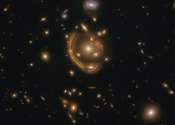Astronomers discover a key planetary system for understanding formation mechanism of mysterious 'super-Earths'
A study led by researchers of the University of Liège and the CSIC—using observations from NASA's TESS telescope—presents the detection of a system of two planets slightly larger than Earth orbiting a cold star in a ...









